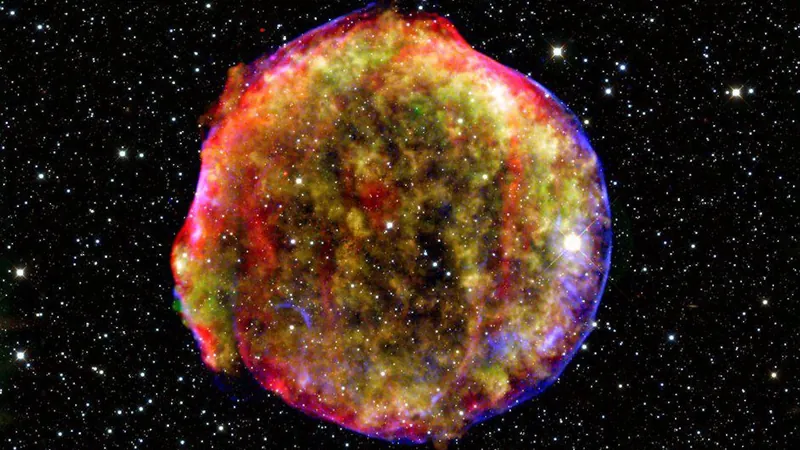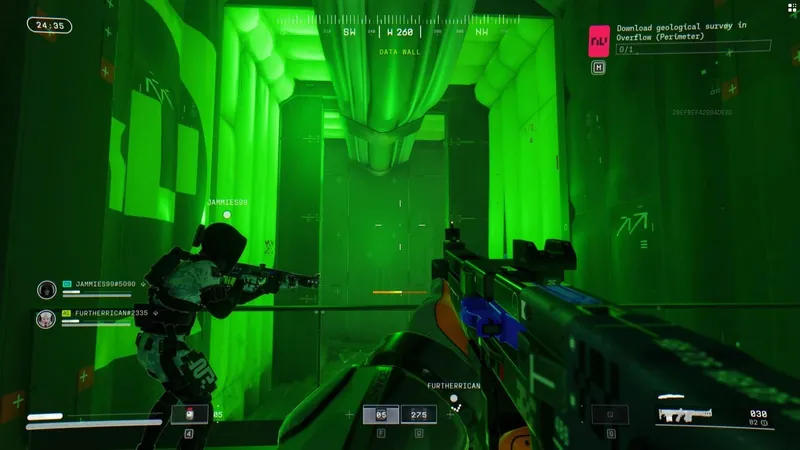
Unveiling the Universe's Most Potent Particle Collider: Supernovas!
2025-05-25
Author: Amelia
Astronomers may have pinpointed one of the universe's most explosive particle colliders: supernovas! New research reveals that these stellar explosions can unleash cosmic rays with staggering power—if certain conditions are met.
For nearly a century, cosmic rays—high-energy particles from the far reaches of the universe—have perplexed scientists. Composed mainly of protons, these rays are occasionally joined by nuclei of heavier elements. While most of these particles are deflected or absorbed by Earth’s magnetic field and upper atmosphere, some brave rays penetrate through, with approximately one cosmic ray colliding with your body every second.
The energy levels of cosmic rays range dramatically, with the most intense ones reaching up to one peta-electron volt (PeV)—a mind-boggling quadrillion electron volts! This energy is up to 1,000 times that of collisions in the Large Hadron Collider, the reigning champion of particle smashers.
Historically, scientists have theorized that the explosive deaths of colossal stars—supernovas—are chief contributors to these high-energy cosmic rays. With an explosion powerful enough to create a tidal wave of particles and magnetic fields, supernovas seemed perfect for the job.
However, observations of supernova remnants like Tycho and Cassiopeia A raised eyebrows; surprisingly, the cosmic rays emitted from these sources were far weaker than expected.
Now, in a groundbreaking study slated for publication in *Astronomy & Astrophysics*, researchers have reignited the supernova theory by confirming that under specific conditions, supernova remnants can indeed act as "PeVatrons"—explosions generating high-energy cosmic rays.
Key to this process is the star shedding a significant amount of mass before exploding—at least the equivalent of two suns! While this mass loss often occurs due to powerful stellar winds, it’s crucial that this material remains dense and concentrated.
When the supernova detonates, the shock wave collides with this shell of material, setting off a cosmic chain reaction. This shock wave ramps up magnetic fields to astonishing levels, accelerating subatomic debris within the blast. Each collision grants the particles more energy until they burst free into the cosmos.
Yet, this cosmic energy bonanza doesn't last long. Within months, the shock wave begins to lose momentum. Although it continues to produce copious cosmic rays, these eventually fall below the PeV threshold.
As we continue to unlock the mysteries of the universe, this new insight into the mighty forces of supernovas could reshape our understanding of cosmic phenomena.









 Brasil (PT)
Brasil (PT)
 Canada (EN)
Canada (EN)
 Chile (ES)
Chile (ES)
 Česko (CS)
Česko (CS)
 대한민국 (KO)
대한민국 (KO)
 España (ES)
España (ES)
 France (FR)
France (FR)
 Hong Kong (EN)
Hong Kong (EN)
 Italia (IT)
Italia (IT)
 日本 (JA)
日本 (JA)
 Magyarország (HU)
Magyarország (HU)
 Norge (NO)
Norge (NO)
 Polska (PL)
Polska (PL)
 Schweiz (DE)
Schweiz (DE)
 Singapore (EN)
Singapore (EN)
 Sverige (SV)
Sverige (SV)
 Suomi (FI)
Suomi (FI)
 Türkiye (TR)
Türkiye (TR)
 الإمارات العربية المتحدة (AR)
الإمارات العربية المتحدة (AR)